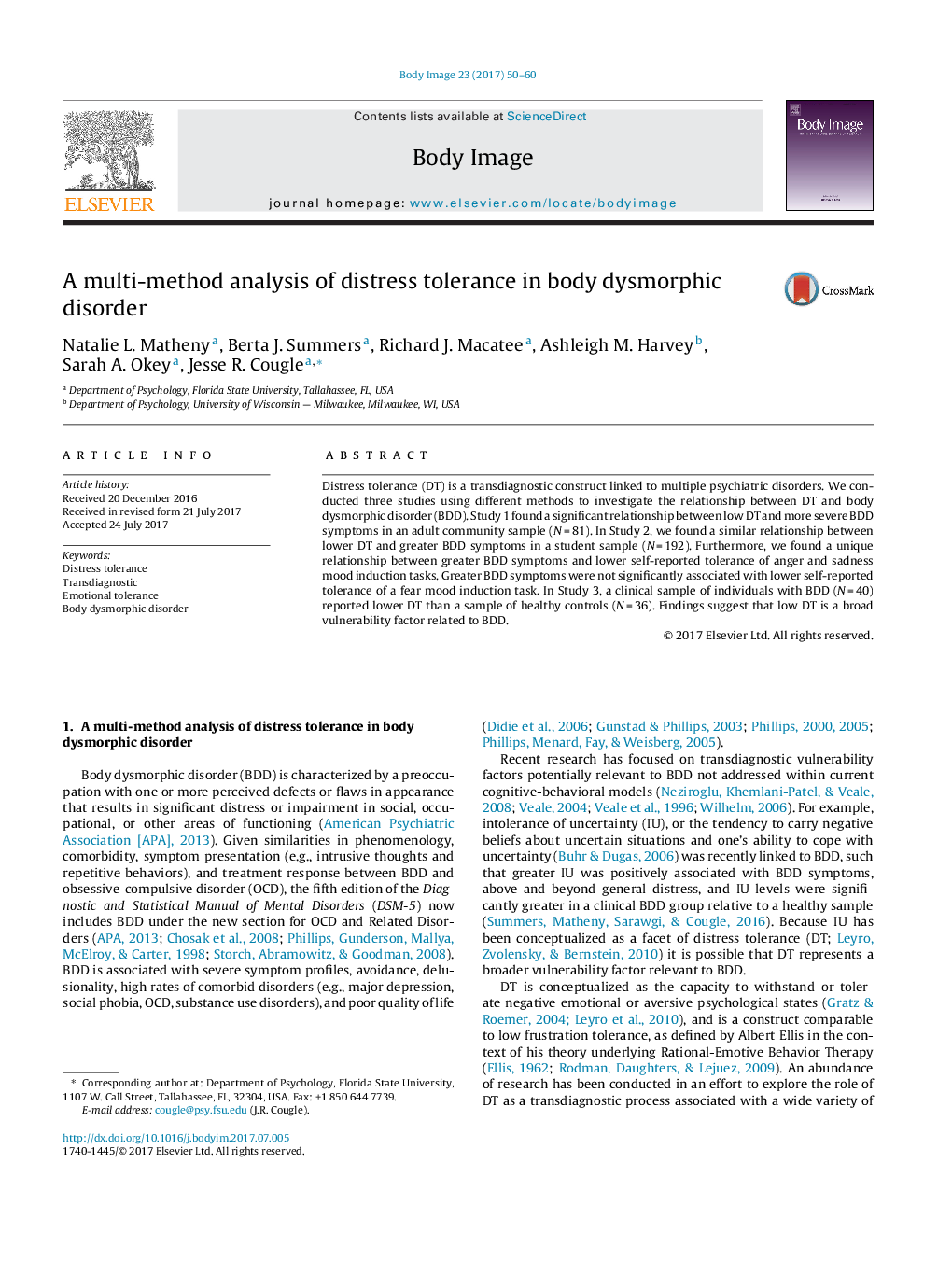| Article ID | Journal | Published Year | Pages | File Type |
|---|---|---|---|---|
| 5038348 | Body Image | 2017 | 11 Pages |
â¢The relationship between DT and BDD symptoms was examined via three studies.â¢Lower DT predicted greater BDD symptoms in community and student samples.â¢Lower tolerance of sadness and anger mood inductions predicted higher BDD symptoms.â¢Tolerance of a fear mood induction was not associated with BDD symptoms.â¢A clinical BDD group reported lower DT than healthy controls.
Distress tolerance (DT) is a transdiagnostic construct linked to multiple psychiatric disorders. We conducted three studies using different methods to investigate the relationship between DT and body dysmorphic disorder (BDD). Study 1 found a significant relationship between low DT and more severe BDD symptoms in an adult community sample (NÂ =Â 81). In Study 2, we found a similar relationship between lower DT and greater BDD symptoms in a student sample (NÂ =Â 192). Furthermore, we found a unique relationship between greater BDD symptoms and lower self-reported tolerance of anger and sadness mood induction tasks. Greater BDD symptoms were not significantly associated with lower self-reported tolerance of a fear mood induction task. In Study 3, a clinical sample of individuals with BDD (NÂ =Â 40) reported lower DT than a sample of healthy controls (NÂ =Â 36). Findings suggest that low DT is a broad vulnerability factor related to BDD.
